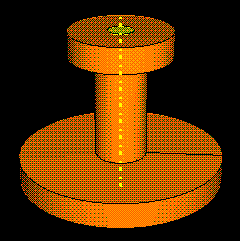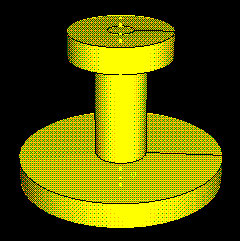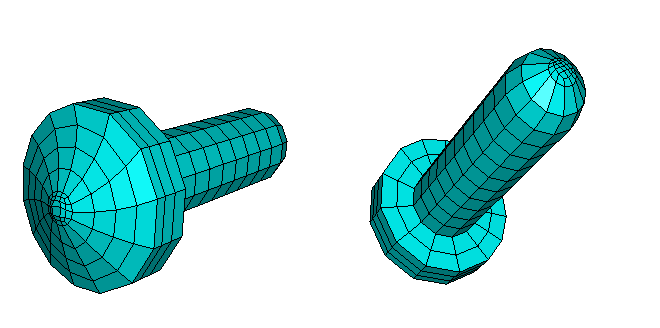Sweep meshing a solid, revolved region whose profile touches the axis of revolution | ||
| ||
Context:
In most cases, unless you create strategically placed partitions, you cannot
sweep mesh a revolved solid region with all hexahedral elements if the profile
that was revolved to create the region touches the axis of revolution. For
example, the cylindrical part in the following figure cannot be swept meshed.

The partitioning technique to make the part swept meshable involves dividing the part or part instance into the following two regions:
-
A cylindrical core region that can be meshed using the extruded swept meshing technique.
-
An outer region that can be meshed using the revolved swept meshing technique.
(For detailed information on sweep meshing solid regions, see Swept meshing of three-dimensional solids.)
| Tip: The following instructions refer to color cues that appear only when the Mesh defaults color mapping is selected. Apply this color mapping to your viewport before attempting to partition a solid, revolved region for sweep meshing. |





